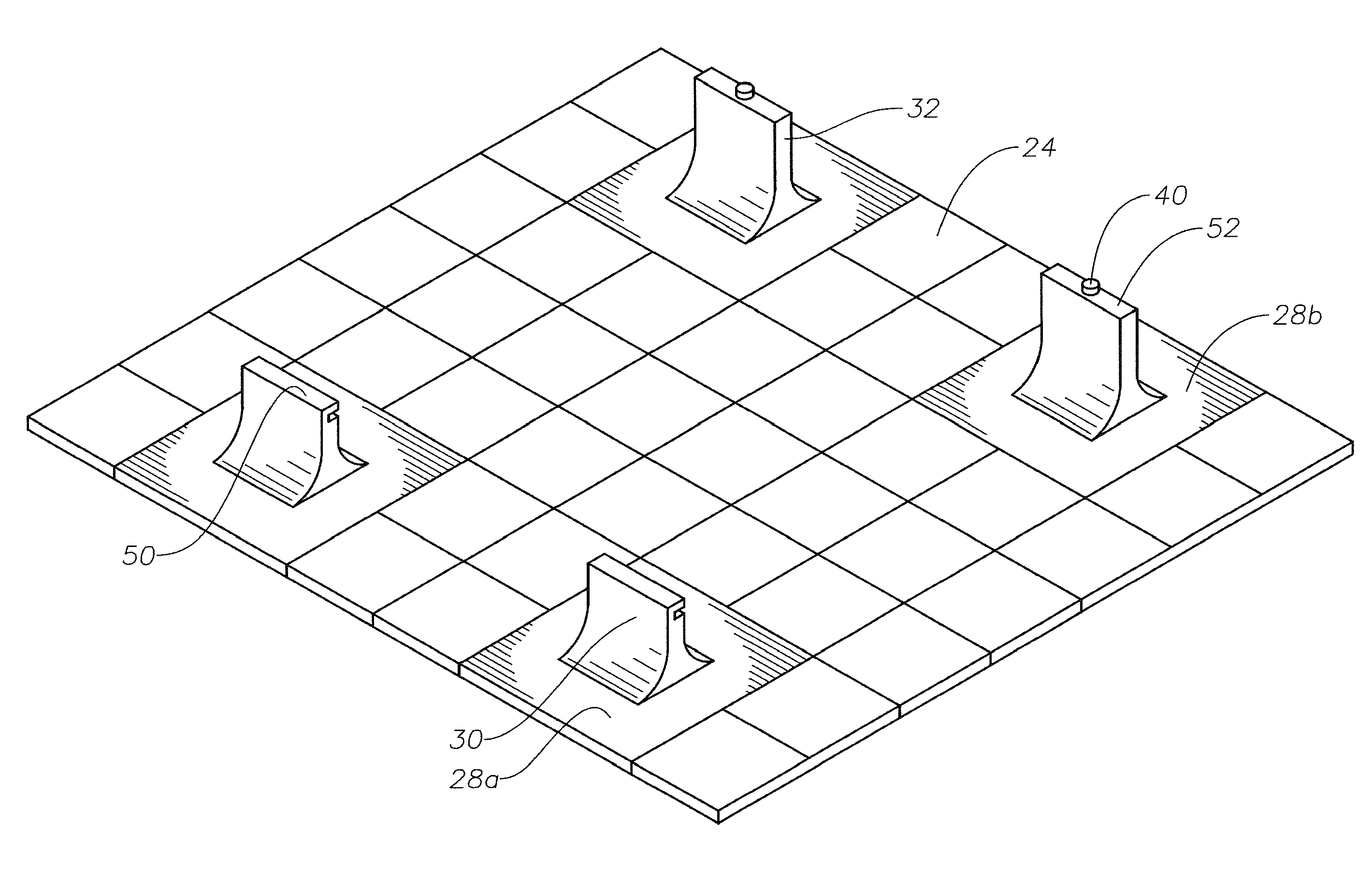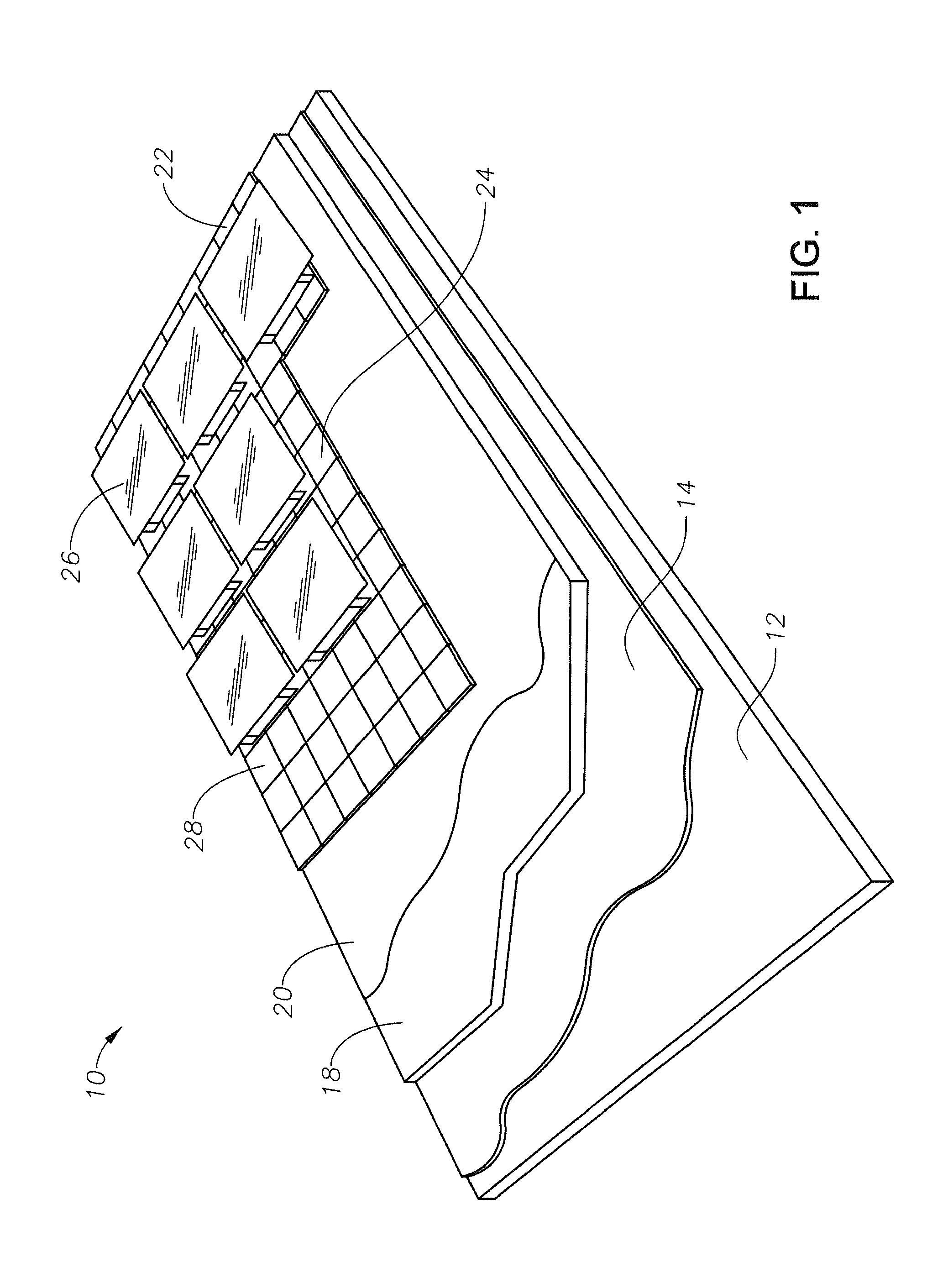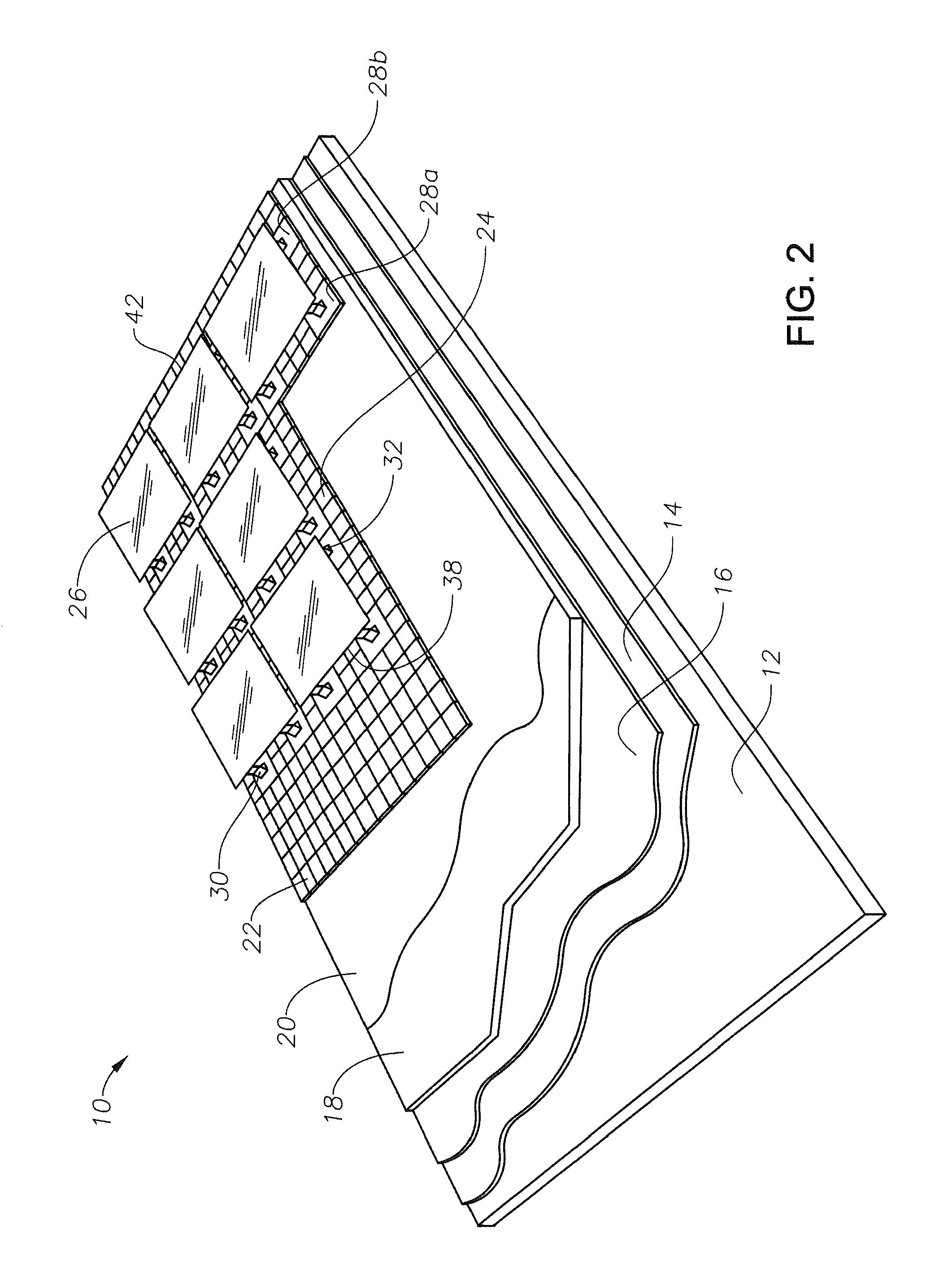Self-ballasted, roof-integrated, lightweight FRC PV mounting system
a photovoltaic module and lightweight technology, applied in the direction of heat collector mounting/support, machine supports, light and heating equipment, etc., can solve the problems of damage to the roof, time-consuming process, and high cost of adjustable mounted arrays, so as to achieve easy and inexpensive manufacturing, and installation with little time and labor
- Summary
- Abstract
- Description
- Claims
- Application Information
AI Technical Summary
Benefits of technology
Problems solved by technology
Method used
Image
Examples
Embodiment Construction
[0041]The foregoing aspects, features, and advantages of the present technology will be further appreciated when considered with reference to the following description of preferred embodiments and accompanying drawings, wherein like reference numerals represent like elements. In describing the preferred embodiments of the technology illustrated in the appended drawings, specific terminology will be used for the sake of clarity. However, the technology is not intended to be limited to the specific terms used, and it is to be understood that each specific term includes equivalents that operate in a similar manner to accomplish a similar purpose.
[0042]As can be seen in the embodiments shown in FIGS. 1 and 2, a typical insulated inverted roofing system, or protected membrane roof 10, can include multiple layers installed over a roof slab 12. Insulated inverted roofing systems or protected membrane roofs have become the standard in the design of modern flat roofs typically used in the co...
PUM
 Login to View More
Login to View More Abstract
Description
Claims
Application Information
 Login to View More
Login to View More - R&D
- Intellectual Property
- Life Sciences
- Materials
- Tech Scout
- Unparalleled Data Quality
- Higher Quality Content
- 60% Fewer Hallucinations
Browse by: Latest US Patents, China's latest patents, Technical Efficacy Thesaurus, Application Domain, Technology Topic, Popular Technical Reports.
© 2025 PatSnap. All rights reserved.Legal|Privacy policy|Modern Slavery Act Transparency Statement|Sitemap|About US| Contact US: help@patsnap.com



